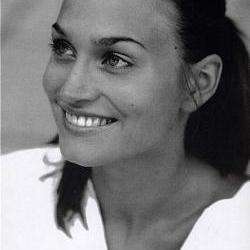Brilliantly cast and meticulously directed, Barrie Kosky’s new Le nozze di Figaro is more than worth the night out to the Wiener Staatsoper. Despite being dealt a rough hand, a fabulous ensemble powered through to present up a production that absolutely flew by, offering a grateful audience an opera which is (basically) exactly what Da Ponte and Mozart intended.
It’s never a great sign when a man in a suit walks out onto the stage before the overture's downbeat, and the bad news this evening was that those awaiting soprano Ying Fang’s highly anticipated house debut would have to wait a bit longer. A vocal cord haemorrhage a few hours before Saturday's premiere meant that the soprano who took the Met by storm was unable to make her Staatsoper debut in one of her signature roles. Once again, she mimed the part on stage with Maria Nazarova singing from the pit. Despite what must be an absolutely devastating time for Fang, both she and Nazarova rose impressively to the occasion. Fang acted her heart out, maintaining authority as the queen-pin in Almaviva’s castle of constant chaos while Nazarova could only impress in what is an absolutely thankless role and earned well-deserved applause. Josh Lovell, cast in the comedic tenor role of Don Basilio, was likewise indisposed and replaced by Robert Bartneck; Vienna might have decided the pandemic is over but it does seem like everyone is sick these days.
Kosky’s attention to detail in his Personenregie hardly implies that his production is set in 18th-century Spain. The decor (Rufus Didwiszus) is Rococo palace for the inner two acts, in a white foyer during Act 1, and the final act features a “forest” of a slanted green floor filled with trap doors through which characters were constantly popping up. Perhaps there were pieces from past productions to be upcycled, who knows. The costuming team (Victoria Behr) was certainly given significantly different notes. Garbs were campy, colorful and located somewhere between the late 60s/early 70s, probably walking down Santa Monica Boulevard — think platform shoes, velvet suits with winged collars, dresses so shiny you shouldn’t stand near a fire and even a robe with feathers. Susanna and Figaro, dressed like hotel staff, seem sane in all this madness, and the only character getting shafted costume-wise was Patricia Nolz as Cherubino. Nolz is gorgeous with a voice to match, but was coded somehow not as a pageboy, but as that middle-aged lesbian aunt who you see at funerals when someone in the family has died, complete with a shaggy pageboy haircut and frilly blouses under boxy suits. She pulled it off because she is amazing, but definitely deserves a medal of special recognition.
As for the rest of the cast, from the bottom up it was an honest-to-god pleasure. Sometimes I wonder what Vienna would do without Stefan Cerny; he’s so consistently excellent it’s unfair. His bass is attractive throughout his range, he refuses to age, and even though he has sung nightly in Vienna for decades, he never phones it in. The same goes for Stephanie Houtzeel as Marcellina, a role offering limited vocal opportunities but which she grabbed by the ears; watching her crawl across the stage in Act 4 is a comedy masterclass. Picking up the no-small-roles mantle, Johanna Wallroth was an excellent Barbarina, and Andrea Giovannini sucked the marrow from Don Curzio, here not a stutterer but a pathological asthmatic constantly pulling on his inhaler.
Both leading baritones were likewise lovely. Peter Kellner, a welcome addition to the ensemble roster, was a convincing Figaro both vocally and physically; his energy on stage cannot help but to charm. Andrè Schuen’s cavalier baritone is so ideal that you almost feel sorry for him as Count Almavivia, until Kosky turns him into an assaulter during the Act 2 finale; the moment passes quickly but still makes you wince. The undeniable star of the evening though, is Hanna-Elisabeth Müller, the best Contessa I have heard in ages. Her voice is rich but still moves effortlessly, and what sets it apart is its timbre. She has a resonance that makes your body vibrate; “Porgi amor” was a revelation that kept giving me chills.
Last but not least, Philippe Jordan led the Staatsopernorchester with energy that only occasionally threatened to lose its footing. I may not love his louder dynamics, but the man can produce a perfectly curated piano; from the opening overture there were exciting subitos aplenty. Vienna was thrilled to welcome him to the podium again.




